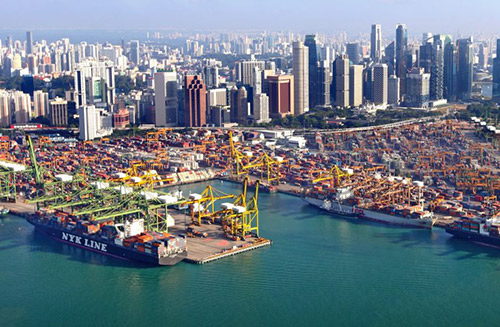Busan
The Port of Busan was established in 1876 as a small port with strict trading between Korea, China and Japan. It is situated at the mouth of the Nakdong River facing the Tsushima Island of Japan. The Port of Busan continued to grow and by 2003 the port was the fourth largest container port in the world. South Korea accounted for 0.7% of global trade in 1970, but by 2003 it went up to 2.5%.

50% of the Busan's manufacturing jobs are related to exports, and 83% of the country's exports are containerized, making Busan the country's largest container and general cargo port. Currently the Port of Busan is the fifth busiest container port in the world and the tenth busiest port in North-east Asia. It is developed, managed, and operated by the Busan Port Authority (BPA) established in 2004. Today the Port of Busan consists of four ports- North Port, South Port, Gamcheon Port, and Dadaepo Port, an International Passenger Terminal and the Gamman container terminal